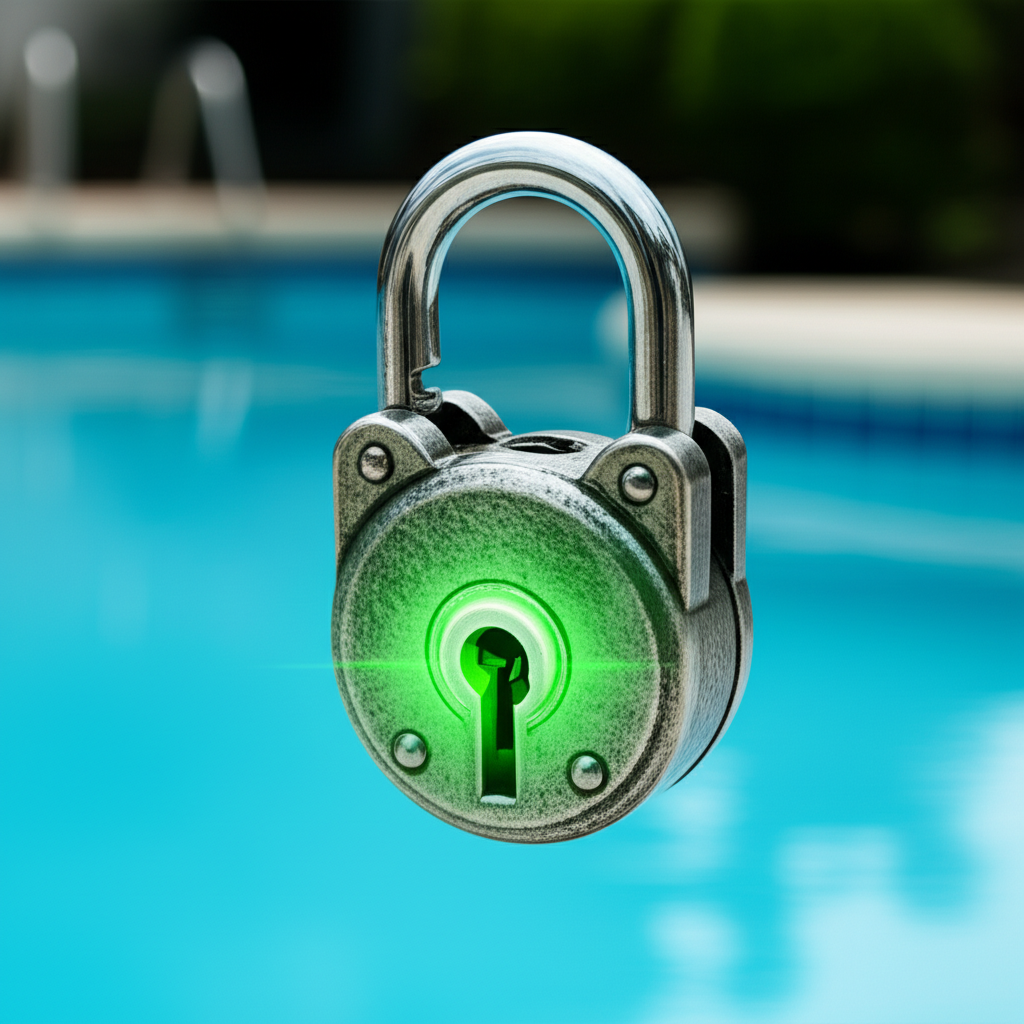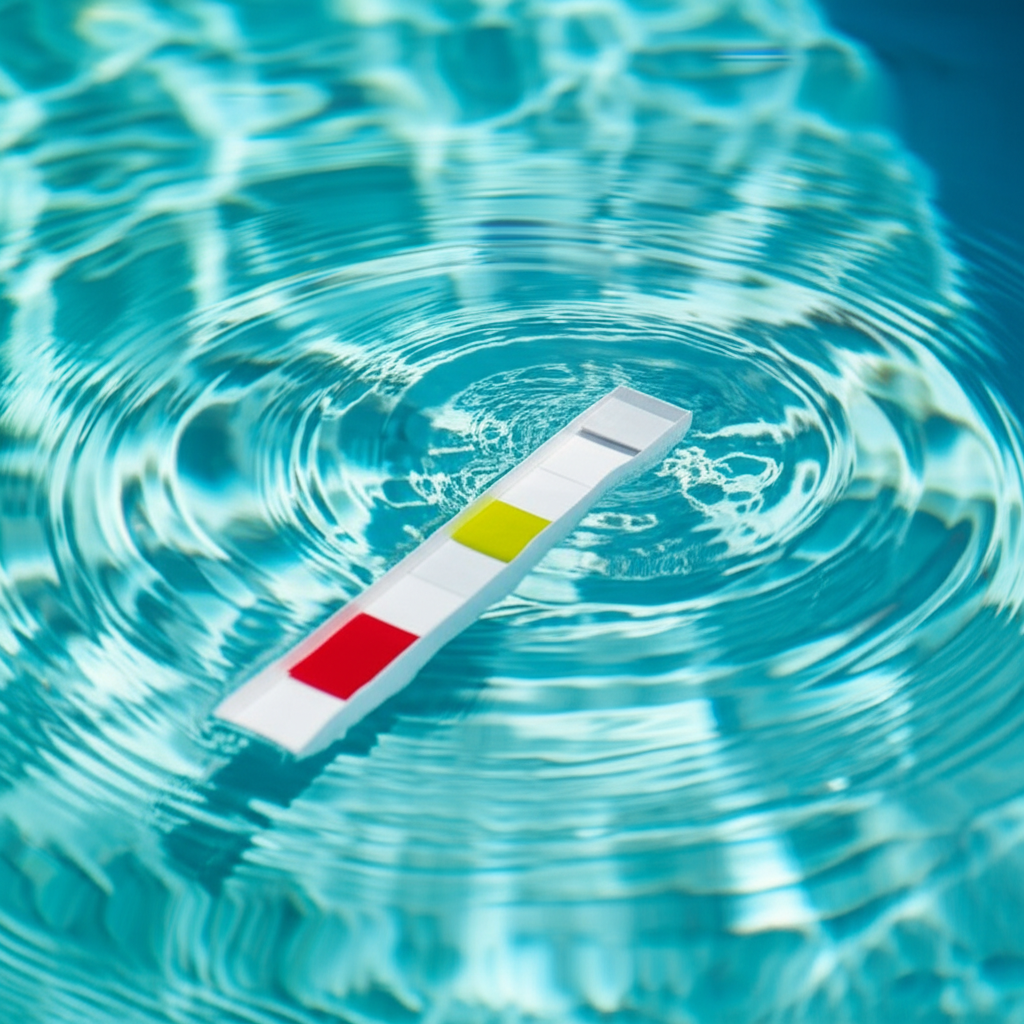- What Exactly Is Chlorine Lock?
- The Double-Edged Sword: Understanding Cyanuric Acid (CYA)
- Why High CYA Leads to Ineffective Chlorine
- Symptoms of Chlorine Lock
- Testing for and Confirming Chlorine Lock
- Breaking the Chlorine Lock: Practical Solutions
- Preventing Future Chlorine Lock Issues
Chlorine Lock is a frustrating and common issue for pool owners, leading to persistent water quality problems despite seemingly adequate chlorine levels. Imagine adding chlorine to your pool daily, regularly shocking it, yet still battling cloudy water, algae blooms, and a general sense of ineffective chlorine. This scenario is the hallmark of a pool suffering from this chemical imbalance, often stemming from an excess of cyanuric acid (CYA) – a condition aptly described as high CYA. Understanding this phenomenon is the first step toward restoring clarity and sanitation to your swimming oasis.
What Exactly Is Chlorine Lock?
At its core, Chlorine Lock isn’t a literal “lock” that prevents chlorine from working entirely. Instead, it describes a situation where free chlorine, the active sanitizer in your pool, becomes overwhelmingly bound by cyanuric acid (CYA). Cyanuric acid plays a vital role by stabilizing chlorine, protecting it from degradation by the sun’s UV rays, and extending its lifespan in the water. However, there’s a delicate balance. When CYA levels climb too high, it binds so much of the free chlorine that there isn’t enough active chlorine available to effectively sanitize the water, kill bacteria, or prevent algae growth. The chlorine is present, but it’s largely inactive, creating the illusion of a chlorinated pool that isn’t clean. This is precisely when you experience that ineffective chlorine despite your best efforts.
The Double-Edged Sword: Understanding Cyanuric Acid (CYA)
Cyanuric acid is an essential component of most outdoor pools. It acts as a “sunscreen” for chlorine, shielding it from ultraviolet light which can deplete up to 90% of unstabilized chlorine in just a few hours. This protective quality allows chlorine to remain in the water longer, reducing the frequency of chlorine additions and helping to maintain consistent sanitation.
However, CYA doesn’t just protect chlorine; it also forms a weak bond with it. This bond is what allows chlorine to be gradually released for sanitation. The problem arises when CYA levels become excessively high. The more CYA in the water, the more chlorine it holds onto, and the less free chlorine is available to actively sanitize the pool. The ratio of free chlorine to CYA is crucial; ideally, you want a free chlorine level that is 7.5% to 10% of your CYA level for effective sanitation. When CYA is too high, it becomes increasingly difficult to maintain this ratio, explaining why even high doses of chlorine seem to vanish without doing their job.
Why High CYA Leads to Ineffective Chlorine
The primary reason for ineffective chlorine in a high CYA environment is kinetic rather than absolute. While chlorine eventually breaks free from CYA to sanitize, the rate at which it does so significantly slows down when CYA levels are elevated. Imagine an emergency services worker stuck in heavy traffic; they’re still on their way, but their effectiveness is severely hampered by the conditions. Similarly, the sanitizing power of chlorine is greatly reduced.
Sources of high CYA are often found in:
1. Stabilized Chlorine Products: Many chlorine pucks (trichlor) and granular chlorine (dichlor) contain CYA. Regular use of these products will inevitably increase your pool’s CYA levels over time.
2. Lack of Water Replacement: CYA does not evaporate or get filtered out. The only way to significantly reduce its concentration is by diluting the water through draining and refilling, or through splash-out.
3. Over-dosing: Accidentally adding too much CYA directly, or using too many stabilized chlorine products, can quickly lead to elevated levels.
Symptoms of Chlorine Lock
Identifying Chlorine Lock involves observing specific symptoms:
Persistent Algae: Green or black algae growing despite regular shocking and maintaining what appear to be adequate chlorine levels.
Cloudy Water: Murky or dull water that doesn’t clear up even after chemical treatments.
High Chlorine Demand: The need to add excessive amounts of chlorine to maintain a residual, only for it to disappear quickly or not seem to have an effect.
Chlorine Odor/Eye Irritation: While often indicative of chloramines, in a high CYA situation, it can be a sign that chlorine isn’t freely available to oxidize contaminants effectively.
Difficulty Passing a OTO Test: The yellow color indicating chlorine takes a very long time to develop or appears very faint, even when your numerical test shows high free chlorine.
Testing for and Confirming Chlorine Lock
To confirm Chlorine Lock, accurate water testing is crucial. You’ll need to measure both your Free Chlorine (FC) and Cyanuric Acid (CYA) levels.
CYA Levels: For traditional chlorine pools, the recommended CYA range is typically 30-50 ppm (parts per million), with some sources suggesting up to 70 ppm. Levels above 100 ppm are almost always indicative of Chlorine Lock, severely hindering chlorine’s effectiveness.
Free Chlorine Levels: Your FC should ideally be 1-3 ppm for general maintenance. However, in a scenario with high CYA, even 5 ppm of FC might not be effective enough.
Test strips can provide a quick overview, but a liquid test kit (like a DPD/FAS-DPD kit) offers more accurate and reliable readings for both chlorine and especially CYA.
Breaking the Chlorine Lock: Practical Solutions
Once you’ve confirmed that your pool is suffering from high CYA and ineffective chlorine, it’s time to take action.
1. Partial Drain and Refill: This is the most effective and universally recommended method to reduce CYA. Since CYA doesn’t evaporate, the only way to lower its concentration is by removing some of the existing pool water and replacing it with fresh, untreated water. Depending on how high your CYA levels are, you might need to drain 25% to 75% of your pool water.
Example: If your CYA is 100 ppm and you want to reduce it to 50 ppm, you would need to drain and refill approximately 50% of your pool water.
2. CYA Reducers (with caution): There are products marketed as CYA reducers available, which contain bacteria that consume cyanuric acid. While these can be effective, they often come with specific application instructions, can be costly, and may take some time to show results. Always follow manufacturer guidelines precisely if you choose this route.
3. Shocking with Unstabilized Chlorine: After reducing your CYA, you’ll need to re-establish proper chlorine levels. Use unstabilized chlorine products like liquid chlorine (sodium hypochlorite) or calcium hypochlorite to shock the pool. This ensures that you’re adding pure chlorine without further increasing your CYA.
Preventing Future Chlorine Lock Issues
Prevention is always better than cure. To avoid falling back into the cycle of high CYA and ineffective chlorine:
Regular CYA Testing: Test your CYA levels monthly, or more frequently if you use stabilized chlorine products.
Manage Stabilized Chlorine Use: If your CYA levels are consistently within range (30-50 ppm), consider switching to liquid chlorine or calcium hypochlorite for your daily sanitation, at least periodically. Reserve trichlor or dichlor for initial stabilization or specific situations.
Dilution Through Backwashing/Splash Out: Regular backwashing of your filter and natural water loss from splashing or evaporation, followed by refilling with fresh water, will contribute to a slow, continuous dilution of CYA.
Avoid Over-Dosing: Be precise with chemical additions. Always measure and follow instructions.
Maintain Proper pH: A balanced pH helps all your pool chemicals, including chlorine, work more efficiently.
In conclusion, understanding and managing cyanuric acid levels is paramount to maintaining a healthy, sparkling clean pool. Don’t let Chlorine Lock turn your swimming experience into a constant battle against ineffective chlorine*. By being proactive with testing, careful with your chemical choices, and ready to dilute when necessary, you can ensure your chlorine is always working at its peak, providing the clean and safe swimming environment you deserve.




